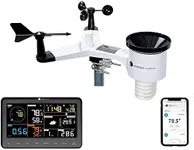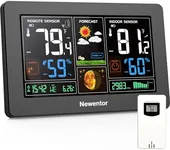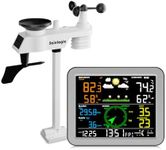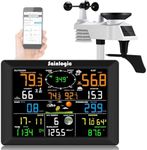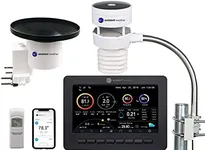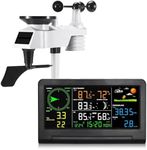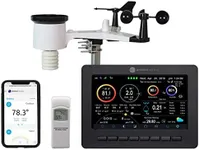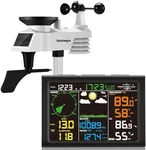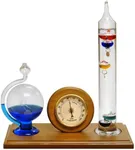Buying Guide for the Best Weather Stations
Choosing the right weather station can greatly enhance your ability to monitor and understand local weather conditions. Whether you're a hobbyist, a gardener, or someone who needs precise weather data for work, selecting the right weather station involves understanding various key specifications. By knowing what each spec means and how it aligns with your needs, you can make an informed decision and get the most out of your weather station.Sensor TypesWeather stations come with different types of sensors that measure various weather parameters such as temperature, humidity, wind speed, wind direction, rainfall, and barometric pressure. The importance of this spec lies in the range of data you want to collect. Basic models may only measure temperature and humidity, while more advanced ones can track multiple parameters. If you need comprehensive weather data, opt for a station with a full suite of sensors. For casual use, a basic model might suffice.
AccuracyAccuracy refers to how close the weather station's readings are to the actual weather conditions. This is crucial for reliable data. Accuracy can vary between models, with professional-grade stations offering higher precision. If you need precise data for scientific research or agricultural purposes, look for stations with high accuracy ratings. For general use, a standard level of accuracy should be adequate.
Data TransmissionData transmission is how the weather station sends data from the sensors to the display unit or a connected device. This can be done via wired connections, wireless signals, or even through the internet. Wireless and internet-connected stations offer more flexibility in placement and remote monitoring. If you want to access your weather data from anywhere, choose a model with internet connectivity. For simpler setups, a wired or basic wireless model will work.
Display and InterfaceThe display and interface of a weather station determine how you view and interact with the data. Some stations have simple LCD screens, while others offer color displays or even app-based interfaces. The importance of this spec depends on how you prefer to access your data. If you want a user-friendly experience with detailed visualizations, opt for a model with a high-quality display or app support. For straightforward data viewing, a basic display will do.
Durability and Build QualityDurability and build quality refer to how well the weather station can withstand various environmental conditions. This is important for ensuring long-term reliability. Weather stations are often exposed to harsh weather, so look for models with robust construction and weather-resistant materials. If you live in an area with extreme weather, prioritize durability. For milder climates, standard build quality should be sufficient.
Power SourceThe power source of a weather station can be batteries, solar power, or mains electricity. This spec is important for ensuring continuous operation. Battery-powered stations offer flexibility in placement but require regular battery changes. Solar-powered models are eco-friendly and low-maintenance but need sufficient sunlight. Mains-powered stations provide consistent power but limit placement options. Choose based on your convenience and the station's location.
Data Logging and StorageData logging and storage capabilities allow the weather station to record and store weather data over time. This is important for tracking trends and analyzing historical data. Some models offer internal memory, while others use external storage or cloud services. If you need to keep long-term records, look for models with ample storage capacity or cloud integration. For short-term monitoring, basic logging features will be enough.
